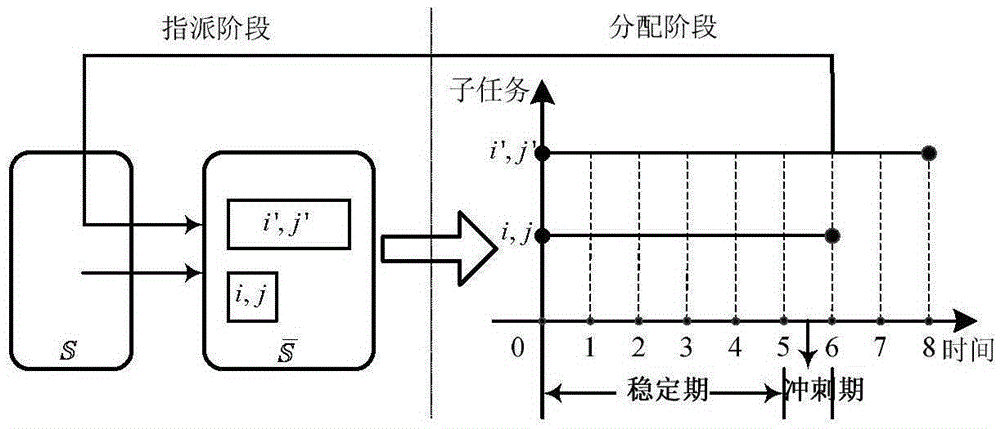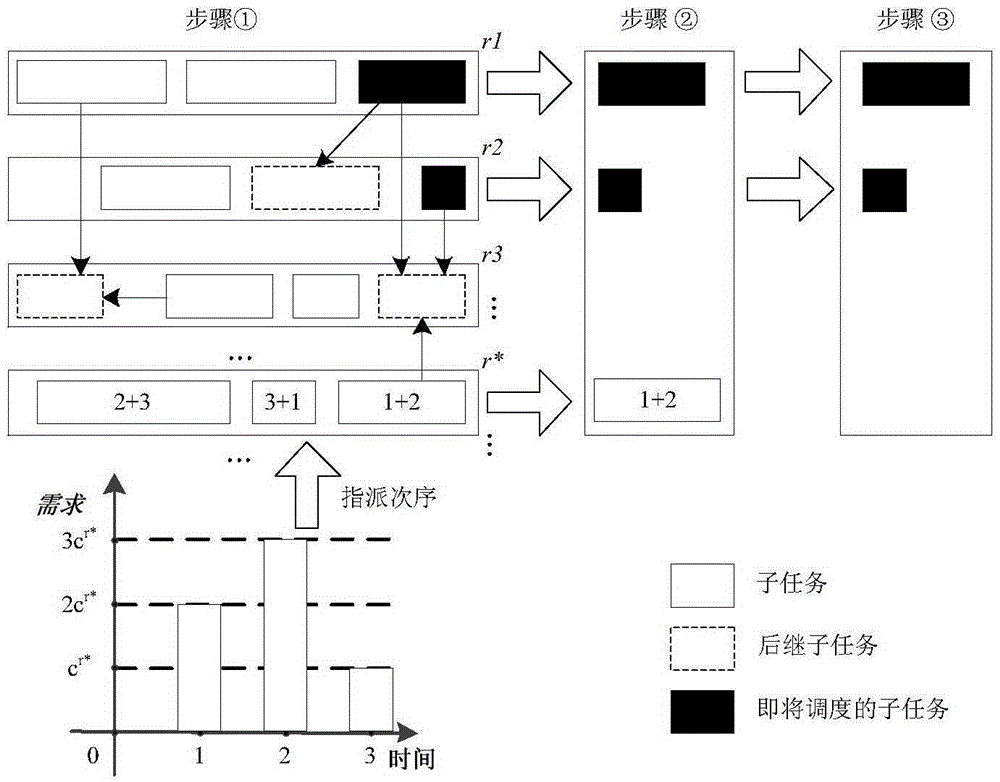Multiple-resource partial order scheduling policy
A scheduling strategy and multi-resource technology, applied in the Internet field, can solve problems such as increasing the difficulty of scheduling algorithms and failure of critical path methods
- Summary
- Abstract
- Description
- Claims
- Application Information
AI Technical Summary
Problems solved by technology
Method used
Image
Examples
Embodiment Construction
[0045] The implementation of the present invention will be described in detail below in conjunction with the drawings and examples.
[0046] Aiming at the above multi-resource partial order task scheduling problem, the present invention proposes a strategy based on master control resource priority (DRP for short).
[0047] 1. Multi-resource POTS model
[0048] Assuming that T is the set of all tasks, each task i∈T can be decomposed into a series of subtasks (i, j). Consider a finite set R of resource types, let c r is the capacity of resource r∈R. For a subtask (i, j), its resource requirements can be defined as If satisfied then the resource Called the master resource of subtask (i,j). Accordingly, define and Respectively, the capacity of the main control resource of the subtask (i, j) and the demand for the main control resource. For a subtask (i, j), its predecessor set and successor set are defined as and
[0049] For a subtask (i, j), the task start tim...
PUM
 Login to View More
Login to View More Abstract
Description
Claims
Application Information
 Login to View More
Login to View More - R&D
- Intellectual Property
- Life Sciences
- Materials
- Tech Scout
- Unparalleled Data Quality
- Higher Quality Content
- 60% Fewer Hallucinations
Browse by: Latest US Patents, China's latest patents, Technical Efficacy Thesaurus, Application Domain, Technology Topic, Popular Technical Reports.
© 2025 PatSnap. All rights reserved.Legal|Privacy policy|Modern Slavery Act Transparency Statement|Sitemap|About US| Contact US: help@patsnap.com



